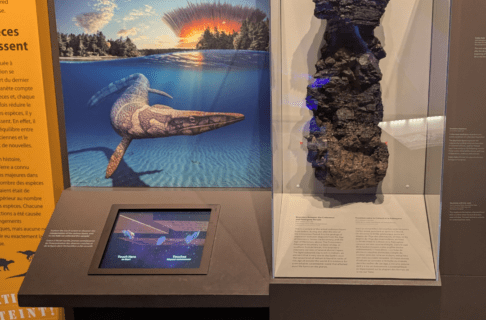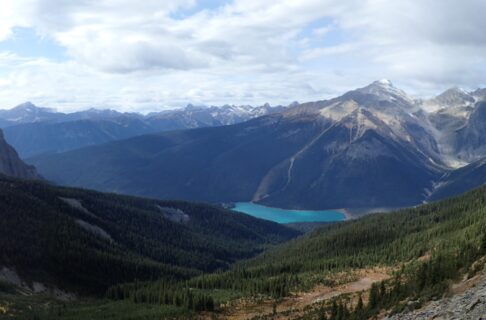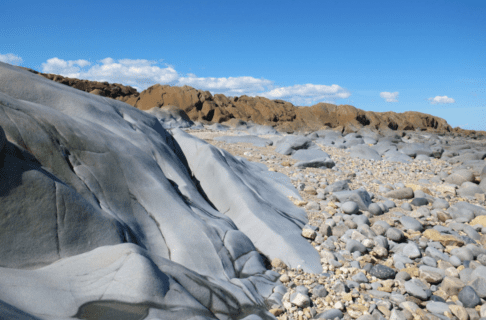Posted on: Thursday March 17, 2016
By Dr. Graham Young, past Curator of Palaeontology & Geology
As you may know if you look at this page occasionally, for the past couple of years we have been working with a beautiful fossil of a pliosaurid plesiosaur, which was collected by Wayne Buckley from western Manitoba. We are now at the stage of preparing a permanent exhibit of the fossil, which will be installed in the Earth History Gallery this summer. So we have been very busy in the past little while!
Much of my own work involves the planning of the exhibit: writing copy for the panels, selecting images and graphics, collaborating with the designer, and working with grants and budgets to ensure that everything is on track. While I am doing this, some of the other staff are carrying out very creative and exciting work: the designer, of course, but also those who are building cases, engineering hanging mounts for a skeletal reconstruction, and figuring out lighting and other technical issues.
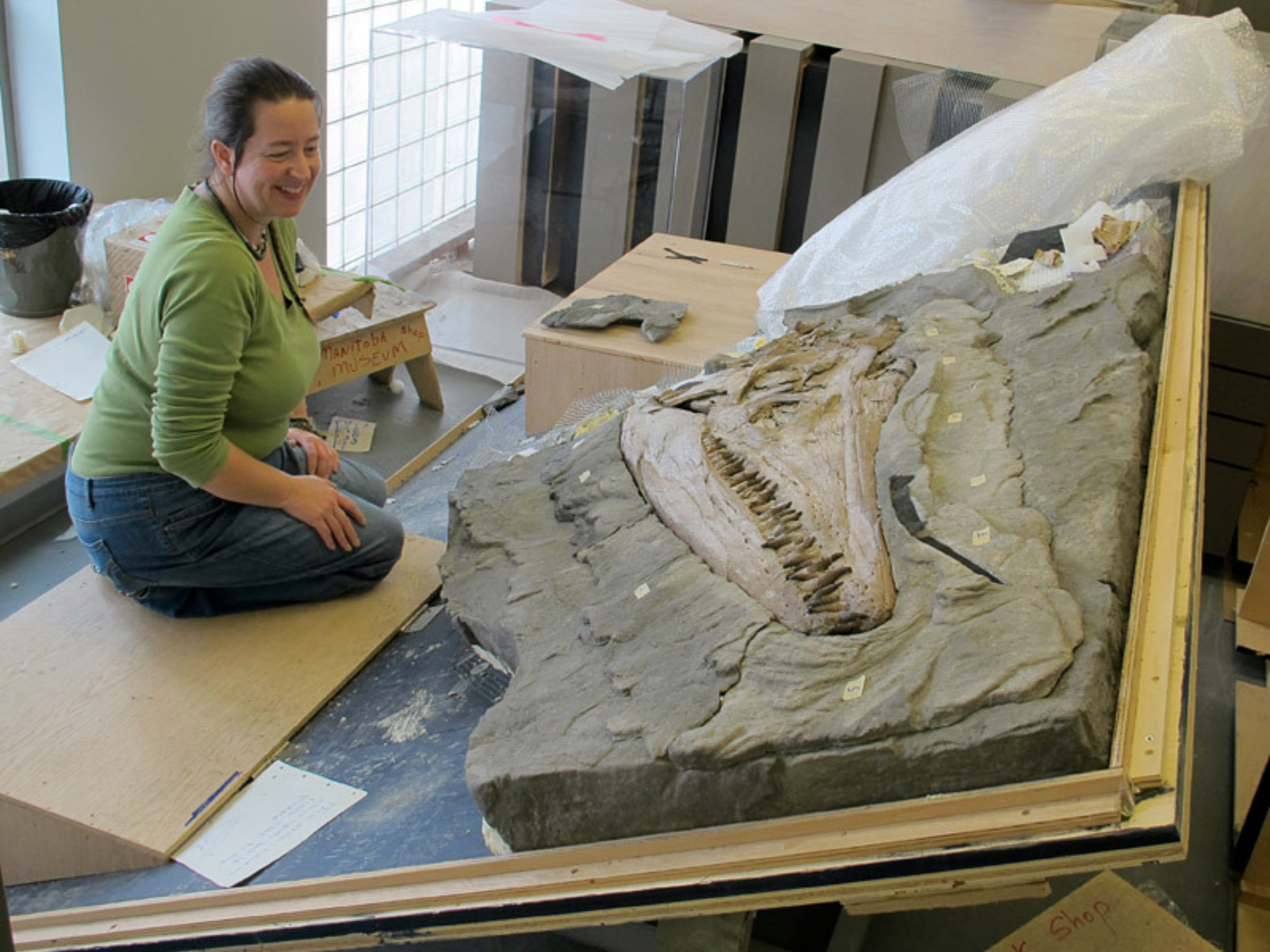
Debbie Thompson considers the splendid mount that she is creating for the pliosaur skull.
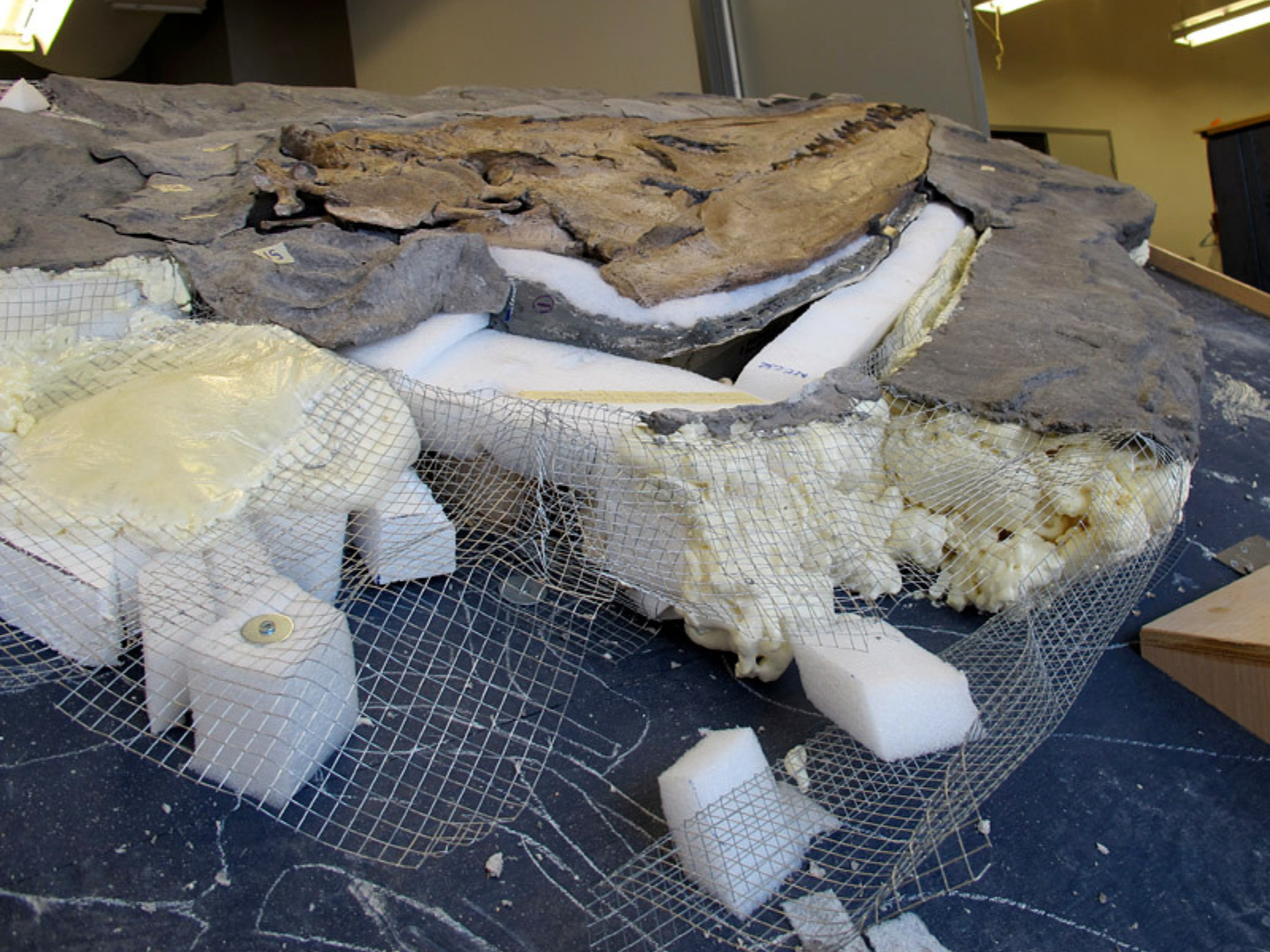
The skull rests on a bed of artificial shale, constructed from a sculpting material over a wire frame filled with spray foam.
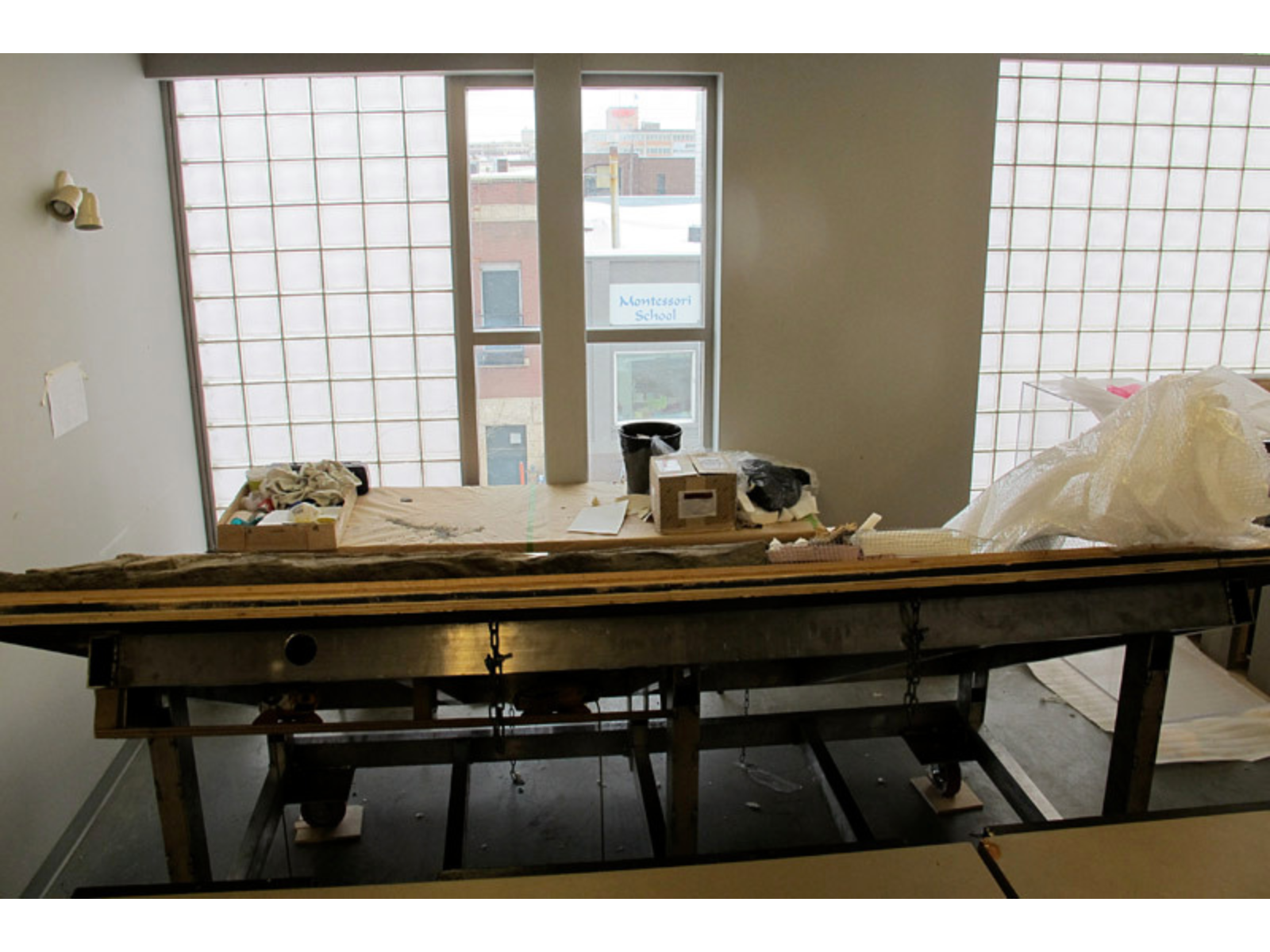
A sturdy steel frame supports the entire mass of skeleton and mount.
As these photos show, one of the most creative tasks is that of artist Debbie Thompson, who is making an artificial stone (shale) bed that will surround the original fossils so that they will look almost the same as they did when they were first discovered. When Debbie’s work is done, I think that many visitors will mistake her “rock” for the real thing, but as these photos show, this is only achieved through tremendous focus and patience.

Debbie fits pieces of “shale” that she has created to cover the skull edges. The skull had to be inserted on its own separate support mount that “slots” into place, so these smaller pieces are needed to hide the edges of that support.
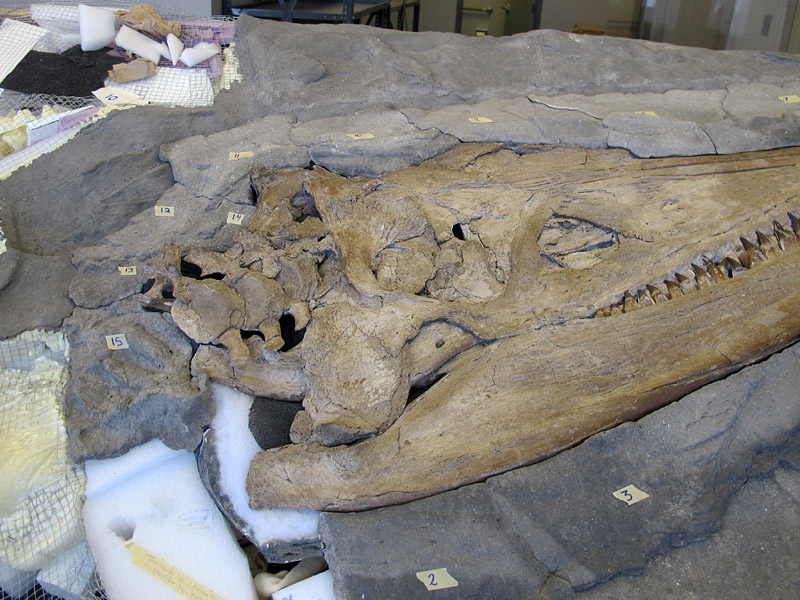
The numbers represent all the pieces Debbie has sculpted to cover the edges of the separate support.
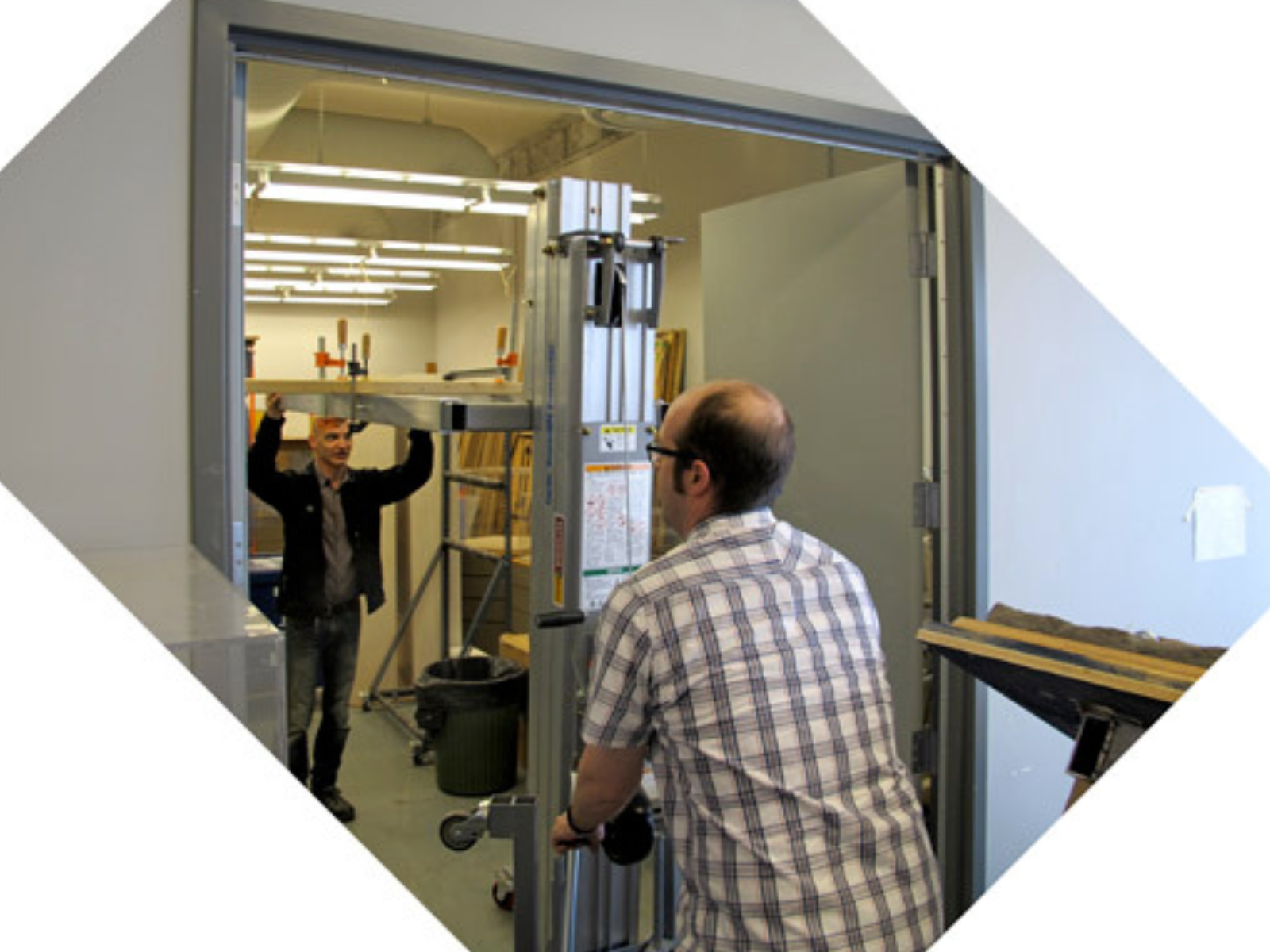
When Debbie had finished preparing all the “shale” for the skull surround, we needed to remove the skull to put it safely away. Here, Bert Valentin and Sean Workman move a specially adapted drywall lift.
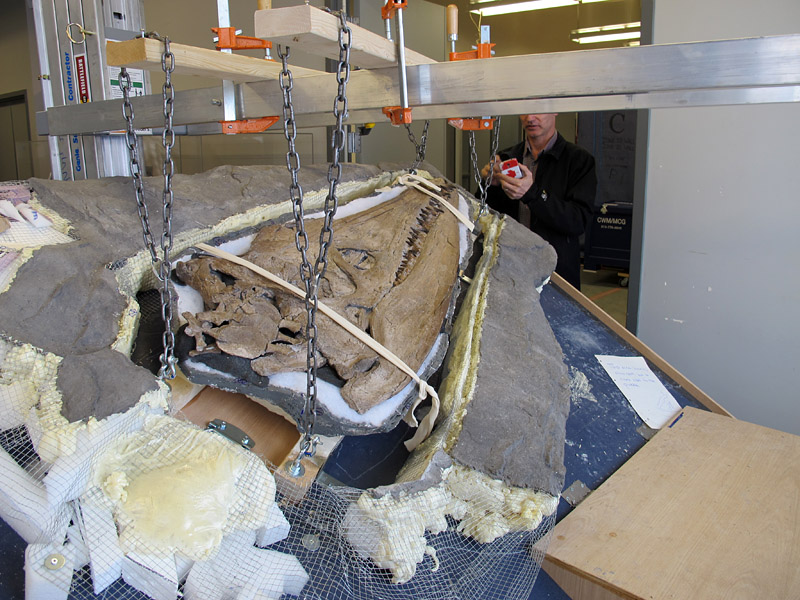
Chains suspended from the drywall lift are attached into loops on the skull support.
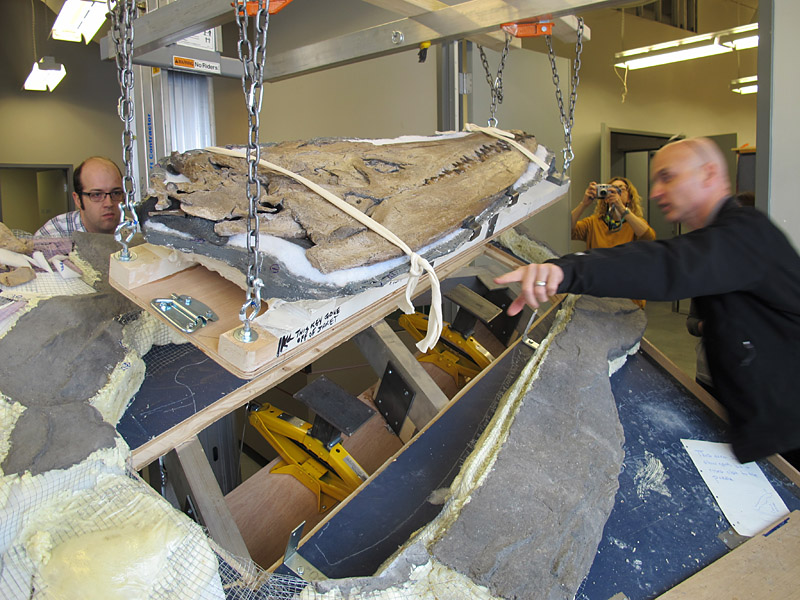
As the skull is lifted, Bert makes sure that everything is kept straight. Note the yellow jacks on which the skull support rested; these allowed for very smooth lowering or raising of the support.
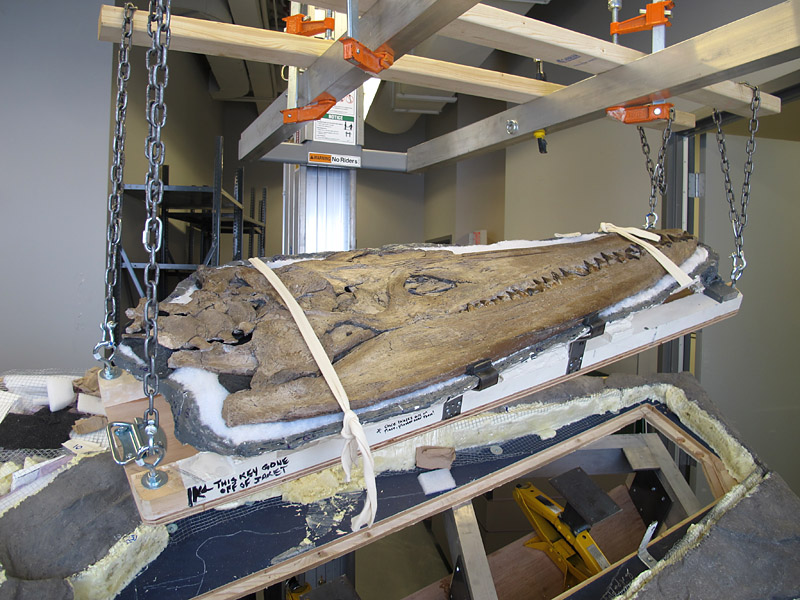
At its full height, the skull support is clear of the mount, and the entire lift can be rotated.
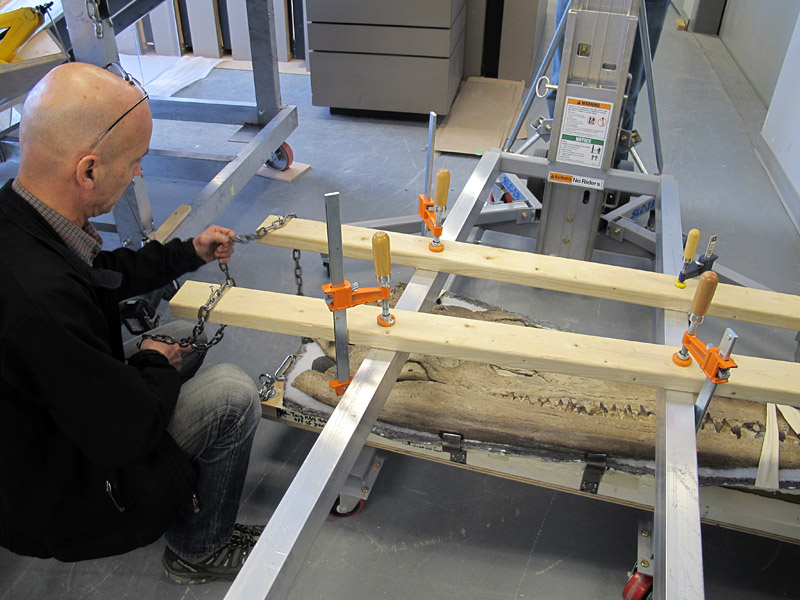
The skull is lowered to the cart that will transport it back to storage, where it will be safe until we are ready for the final installation in the Earth History Gallery.



